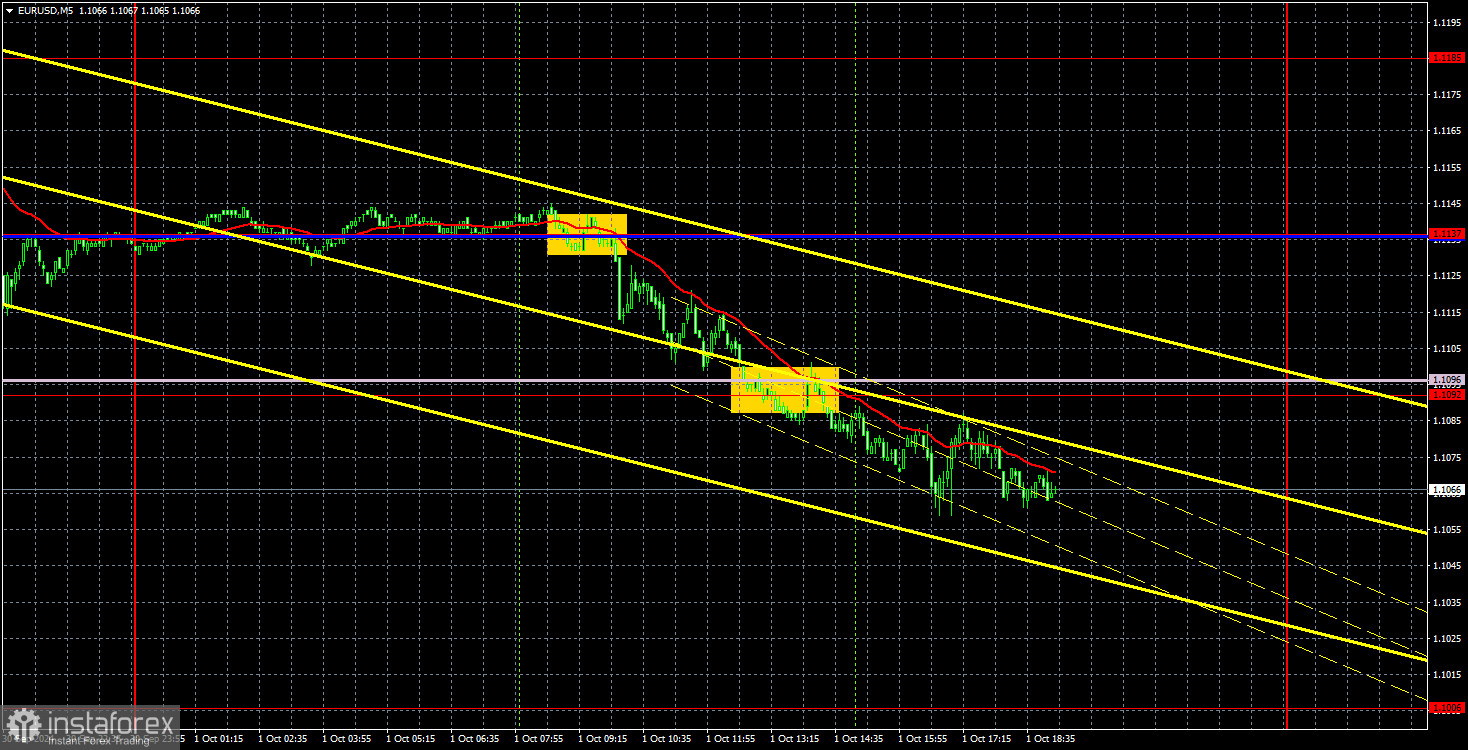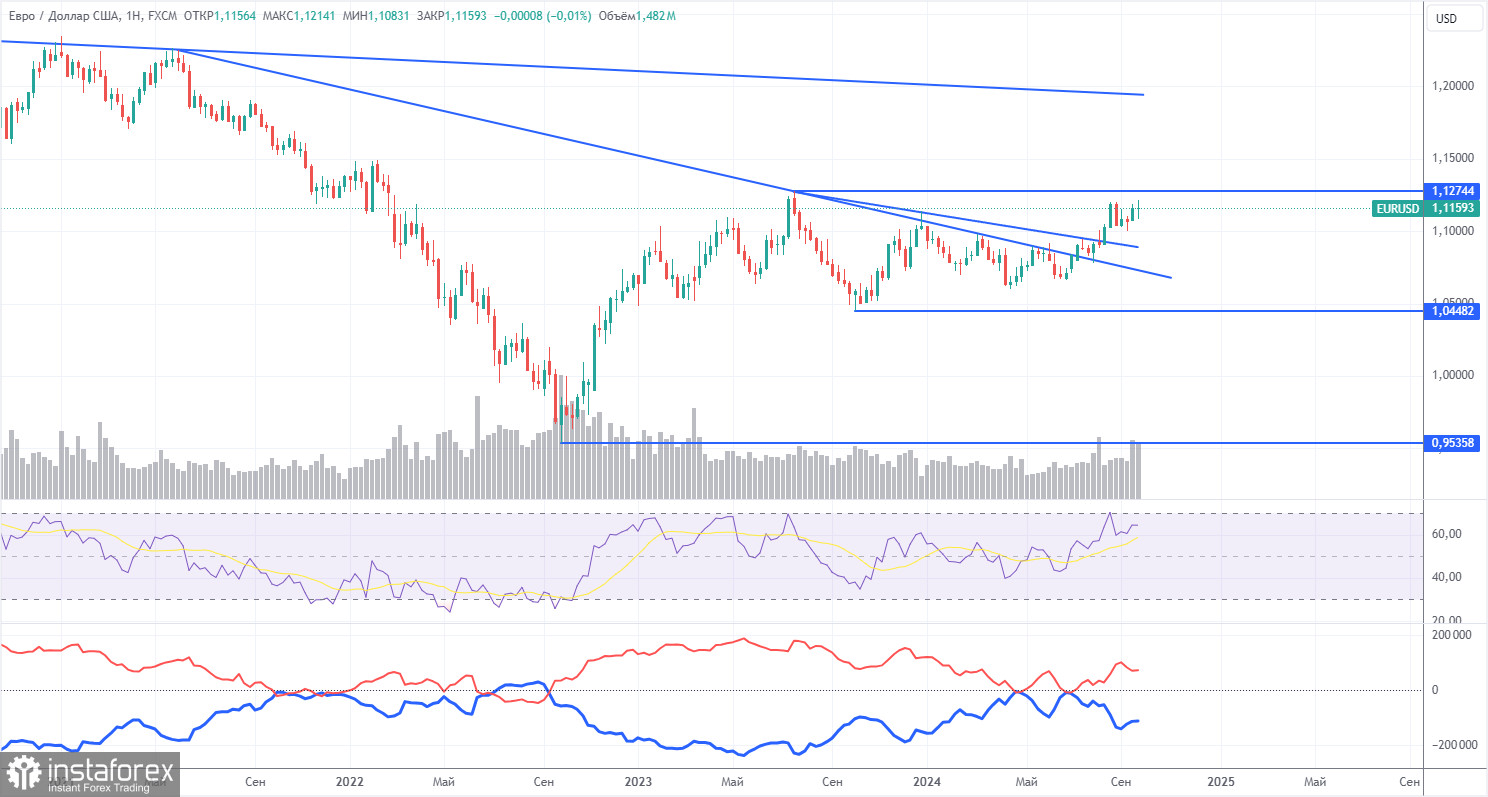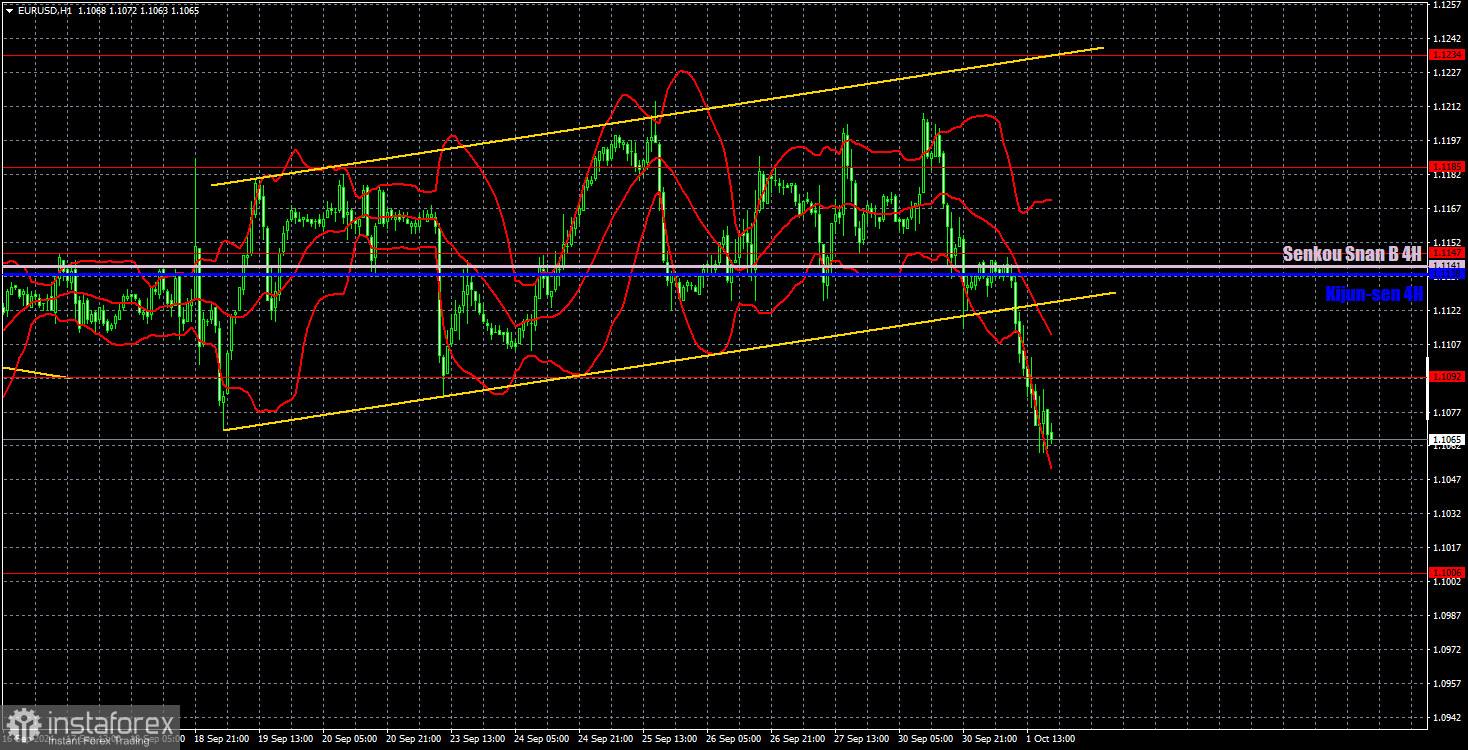Analysis of EUR/USD 5M

The EUR/USD currency pair experienced a sharp decline on Monday and Tuesday, with euro quotes dropping by 160 pips in less than two days. We had long warned traders that the euro was overbought and unreasonably expensive, lacking growth factors even months ago, let alone now. And so, the collapse began. We believe this is just the beginning of the pair's decline, which could continue for a long time. It's important to understand that, over the last two years, the market has been actively pricing in the future easing of the Federal Reserve's monetary policy. Now that it's underway, there are no further reasons to sell the dollar.
On top of that, a whole range of events provided support to the U.S. currency on Monday and Tuesday. The military conflict in the Middle East has begun to escalate, inflation in the Eurozone falling below the target level, Jerome Powell assuring markets that a 0.5% rate cut is not planned for November, and Christine Lagarde hinting that the subsequent easing might happen in October rather than December, all contributed to this. However, in our view, these are secondary factors. The primary factor has been and remains the overall overbought condition of the pair and its unjustifiably high price level. Simply put, the euro became too expensive.
On Tuesday, two trading signals were generated that deserved attention. First, the pair broke through the critical line, and then it crossed the Senkou Span B line. Thus, traders could have opened short positions at the start of the European trading session. By the evening, the short positions had accumulated a profit of about 50-60 pips, and the decline will likely continue.
COT Report:

The latest COT (Commitment of Traders) report is dated September 24. The illustration above clearly shows that the net position of non-commercial traders has remained bullish for a long time. The bears' attempt to gain dominance was a resounding failure. The net position of non-commercial traders (red line) declined in the second half of 2023 and the first half of 2024, while commercial traders (blue line) increased. Currently, professional players are once again building up long positions.
We still do not see any fundamental factors for strengthening the euro, and technical analysis suggests that the price is in a consolidation zone – in simpler terms, a flat market. On the weekly time frame, it's visible that since December 2022(!!!), the pair has been trading between 1.0448 and 1.1274. In other words, we have moved from a 7-month flat market to an 18-month one.
The red and blue lines are diverging at the moment, indicating an increase in long positions for the euro. However, such changes cannot be the basis for long-term conclusions within the flat market. During the last reporting week, the number of longs in the non-commercial group increased by 5,500, while the number of shorts grew by 3,500. Consequently, the net position increased by 2,000. The potential for a decline in the euro currency remains.
Analysis of EUR/USD 1H

In the hourly time frame, the pair still has a realistic chance of ending the two-year-old unjustified upward trend. There's no point in discussing fundamental and macroeconomic reasons for the dollar's further decline—they don't exist. Technical analysis has also turned in favor of a downward movement. Of course, the two-year upward trend may continue due to momentum, but we expect a decline in the medium term.
For October 2, we highlight the following levels for trading — 1.0658-1.0669, 1.0757, 1.0797, 1.0843, 1.0889, 1.0935, 1.1006, 1.1092, 1.1147, 1.1185, 1.1234, 1.1274, as well as the Senkou Span B (1.1141) and Kijun-sen (1.1138) lines. The lines of the Ichimoku indicator can shift during the day, so it's important to consider this when identifying trading signals. Don't forget to place a Stop Loss order at break even if the price moves 15 pips in the intended direction. This will protect you from potential losses if the signal is false.
On Wednesday, the Eurozone will release a less significant unemployment report, while in the U.S., a more important but still not the most significant ADP report on private-sector employment will be published. These reports should be watched closely.
Explanation of Illustrations:
Support and resistance levels: thick red lines where price movement may end. They are not sources of trading signals.
Kijun-sen and Senkou Span B lines: lines of the Ichimoku indicator transferred to the hourly time frame from the 4-hour chart. These are strong lines.
Extreme levels: thin red lines from which the price has previously bounced. They serve as sources of trading signals.
Yellow lines: trend lines, trend channels, and other technical patterns.
Indicator 1 on the COT charts: shows the net position size of each trader category.
 English
English 
 Русский
Русский Bahasa Indonesia
Bahasa Indonesia Bahasa Malay
Bahasa Malay ไทย
ไทย Español
Español Deutsch
Deutsch Български
Български Français
Français Tiếng Việt
Tiếng Việt 中文
中文 বাংলা
বাংলা हिन्दी
हिन्दी Čeština
Čeština Українська
Українська Română
Română

